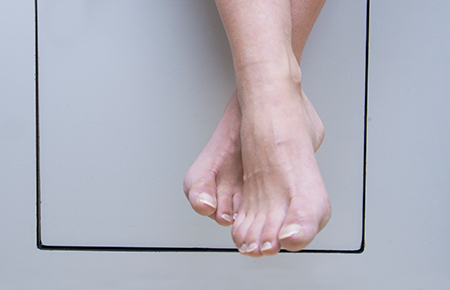An old proverb states,“No hoof, no horse.” And as anyone with foot pain knows, that statement applies to both man and beast. An aching foot takes the pleasure out of most daily activities.
Studies show that three out of four people will have a foot problem at some time in their lives, and many will never seek the medical attention that can cure them.
1. Bunions. A bunion is a swelling of the joint at the base of the big toe. This is often a genetic condition rather than something you’ve done to damage your feet. While some bunions may require surgery, the first steps in treatment include the use orthotics, padding and splinting to help relieve pain.
2. Plantar fasciitis. Heel pain is caused when the thick, fibrous tissue that covers the bottom of the foot becomes inflamed and painful. It occurs in athletes who run and jump, middle-aged people, and those who are overweight. No matter the cause, all cases are treated like an athletic injury. Treatment includes anti-inflammatory drugs (aspirin, ibuprofen, naproxen), physical therapy, cortisone injections and, as a last resort, surgery.
3. Heel Spurs. A heel spur develops when a calcium deposit forms on the heel bone. This happens when the plantar fascia pulls away from the heel area, often in conjunction with Plantar fasciitis. Heel spurs can cause extreme pain in the back of the foot, especially while standing or walking. Treatment is the same as Plantar fasciitis.
4. Osteoarthritis of the foot and ankle. This is caused by simple wear and tear in the joint and is most often seen in patients over age 60. There are several treatment options, including anti-inflammatory drugs, braces, physical therapy, hot/cold therapy and changes to diet and activity level. There are also surgical options for arthritis pain in the foot and ankle.
5. Diabetic Neuropathy. People with diabetes may develop nerve damage in their feet, causing a burning or tingling pain and sometimes numbness. Treatment can include the use of braces or supportive shoes and medical management of the pain in conjunction with the patient’s primary care physician.
6. Hammertoe. A hammertoe is a toe that bends up permanently at the middle joint. It is caused by a tendon imbalance and occurs in all age groups from children to seniors. Children may outgrow the condition, while others are treated with orthotics, splinting, and sometimes surgery to straighten the toes.
7. Morton’s Neuroma. This is a chronic injury to the nerve between the toes, which causes thickening of the nerve in that area. It can cause pain and can make walking difficult. Symptoms include tingling in the space between the third and fourth toes, toe cramping, and sharp, shooting or burning pain in the ball of the foot. Non-surgical management includes padding the toe area, shoe inserts, anti-inflammatory medications and nerve blocks. Surgery may be needed to remove the thickened tissue.
8. Corns and Calluses. Corns are caused by pressure on the skin from the inside, such as from a bone. Calluses are hard, thickened skin on parts of the foot exposed to friction. The best treatment is to correct the biomechanical cause of the pressure or friction. Don’t try to cut or burn them off.
9. Ingrown Toenails. A podiatrist can perform an in-the-office surgical treatment to cut away the ingrown portion of the nail. It is then treated with a chemical to keep it from growing back.
10. Toe Fungus. OK, while it’s not painful, still it’s a common foot complaint and one that’s a pain to treat. Oral medications are the most effective treatment, followed by topical medications, creams and lotions.
Previous post: 3 Moves To Ease Your Heel Pain
Next post: Everything you wanted to know about Bunions
